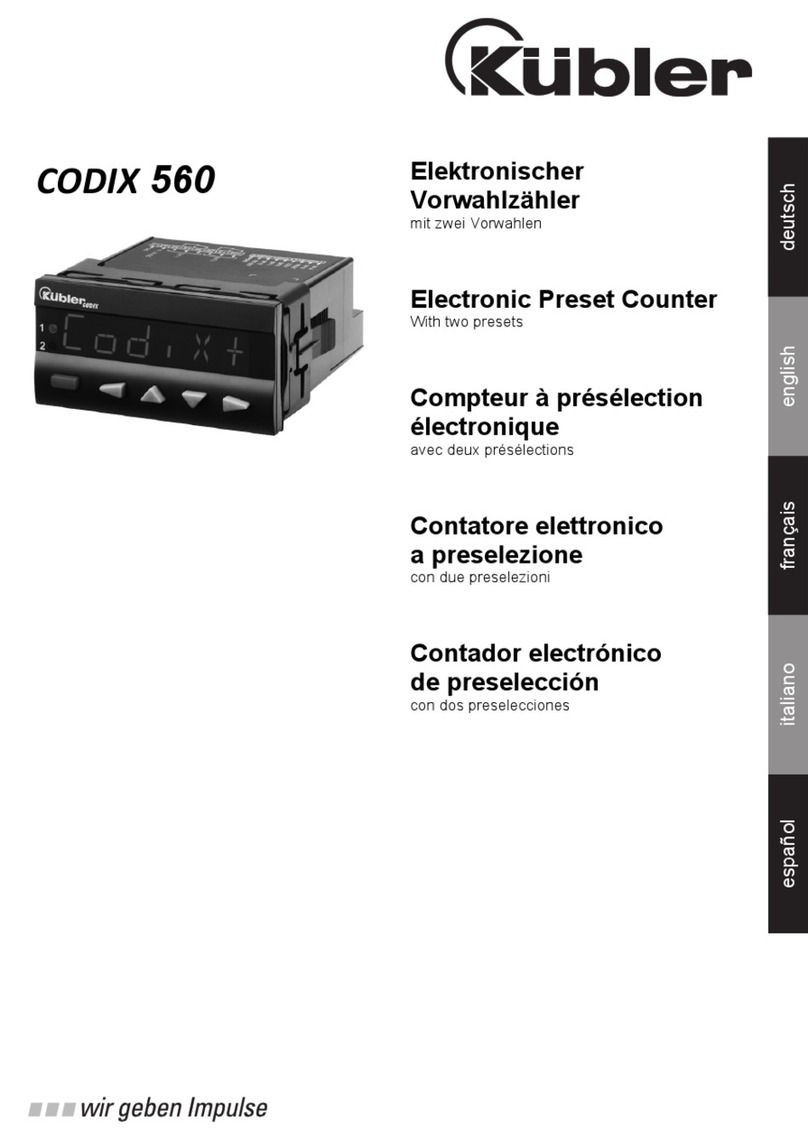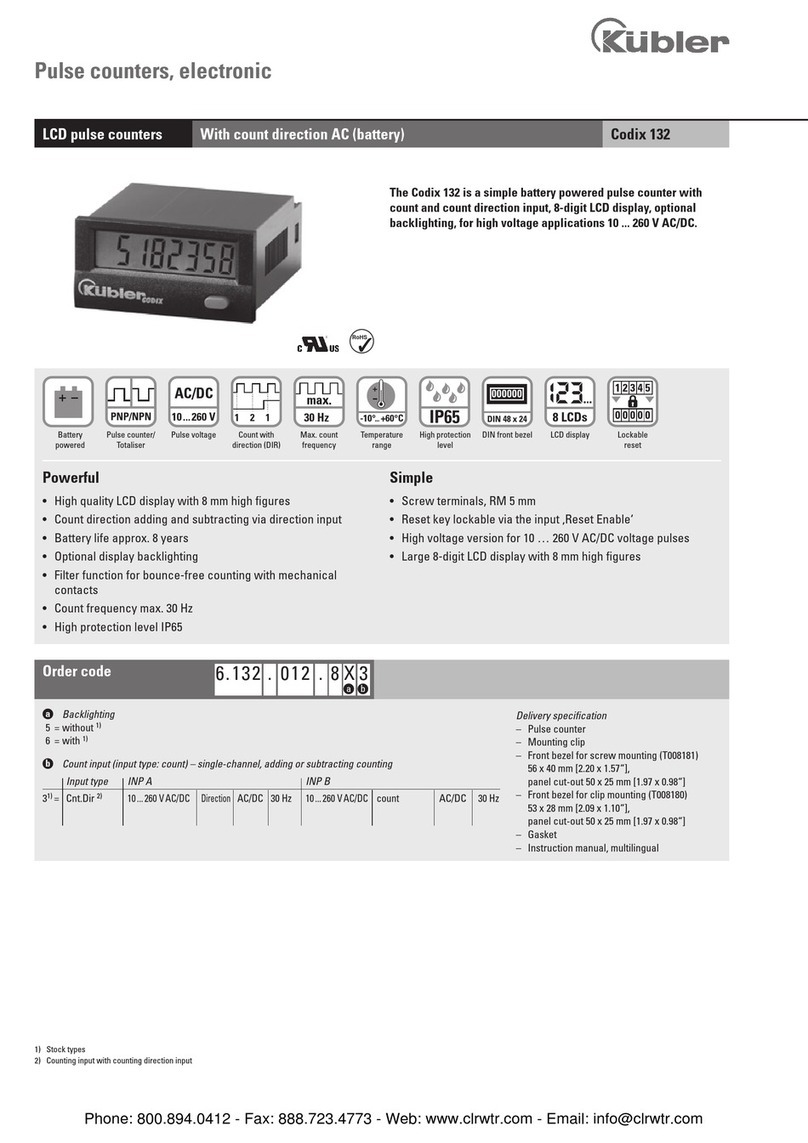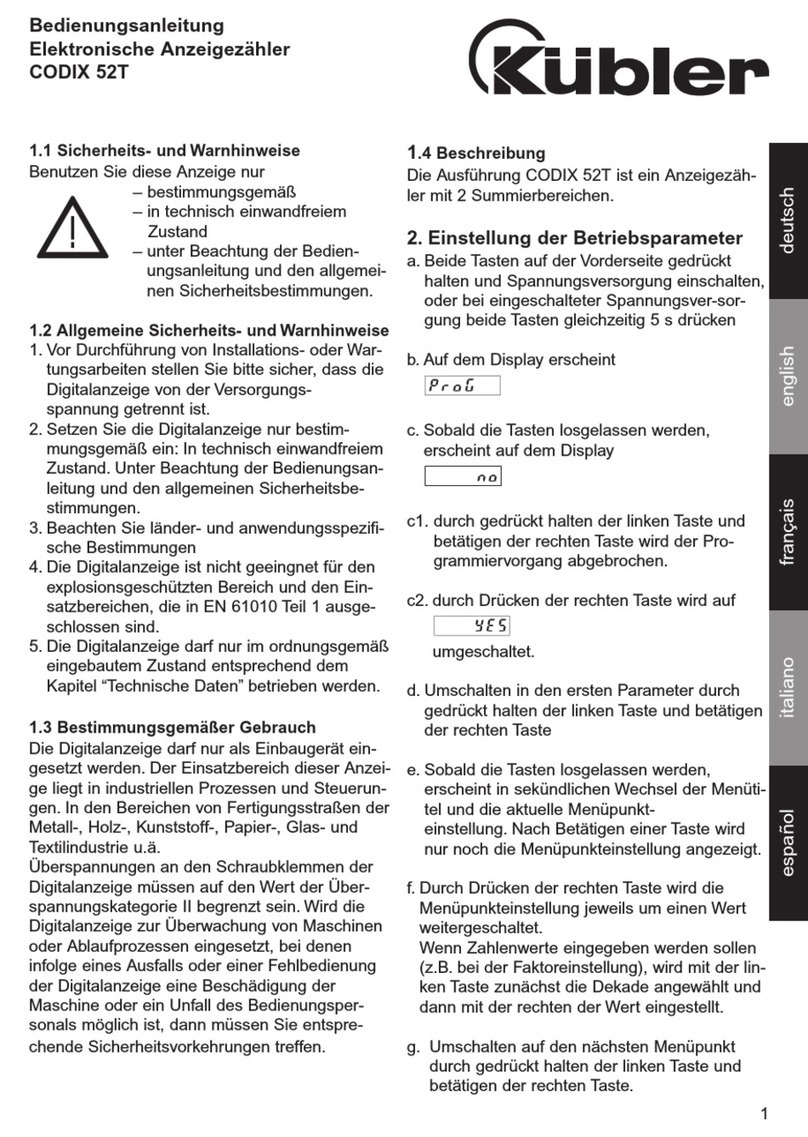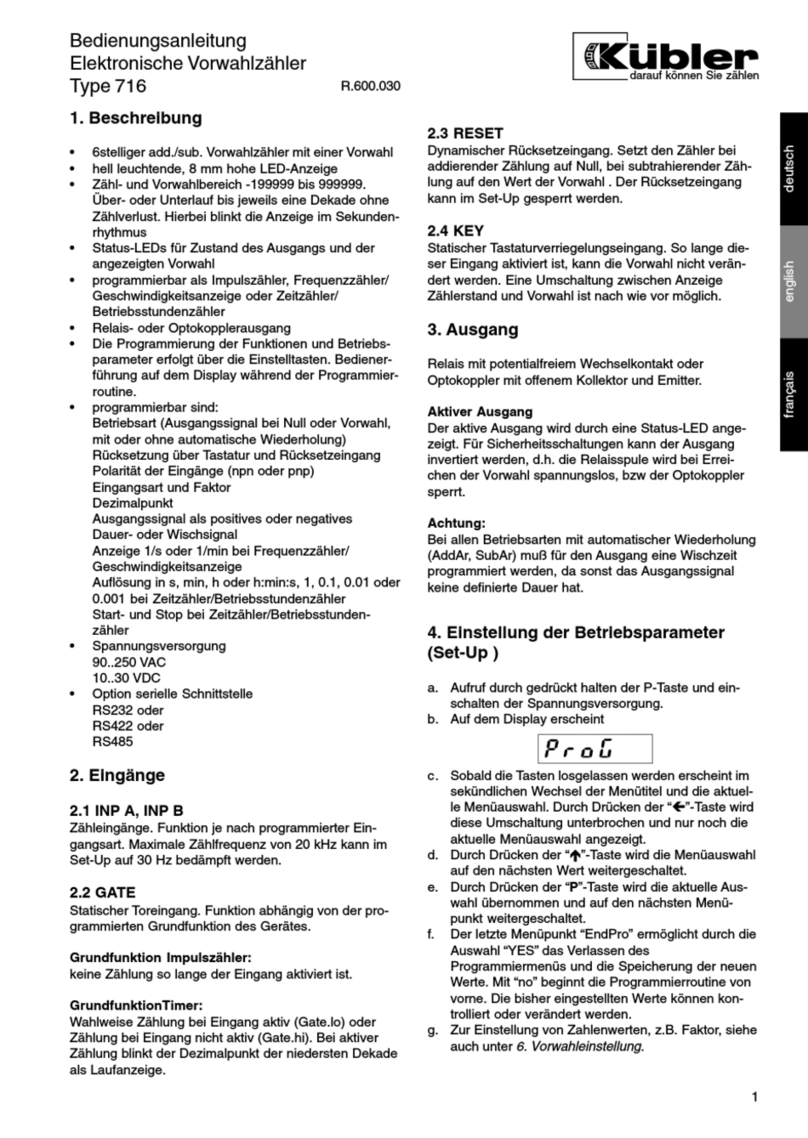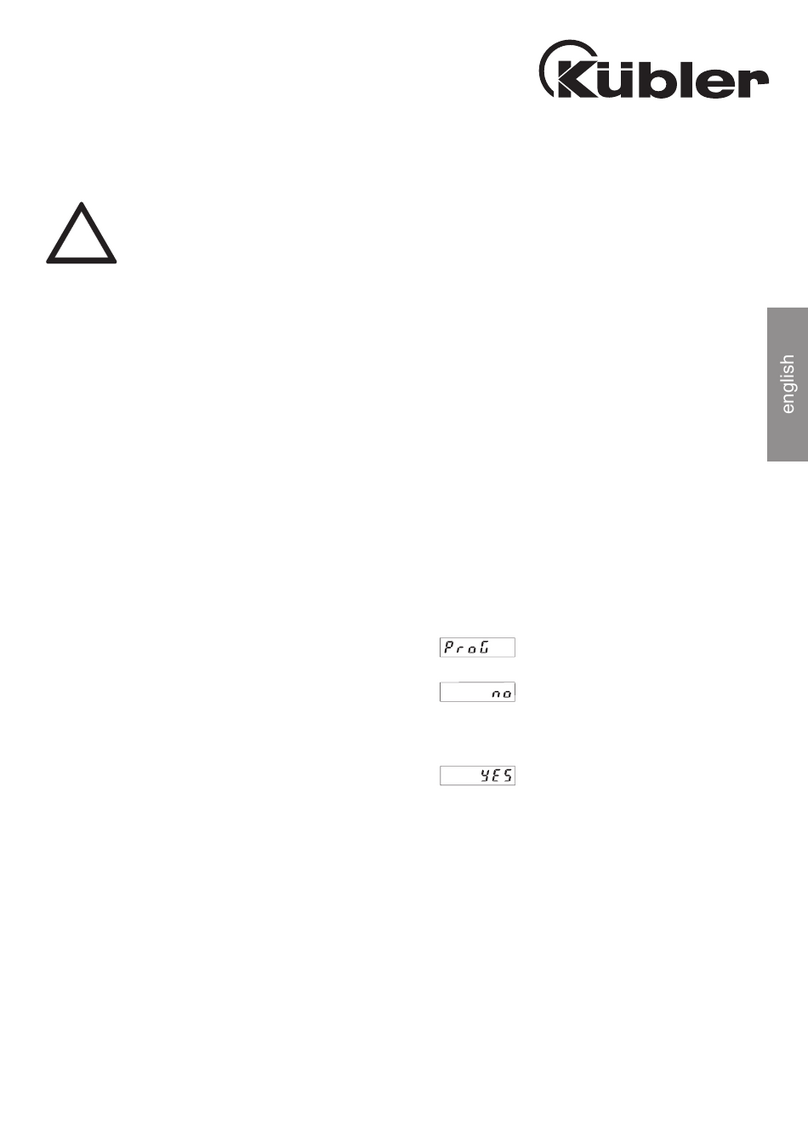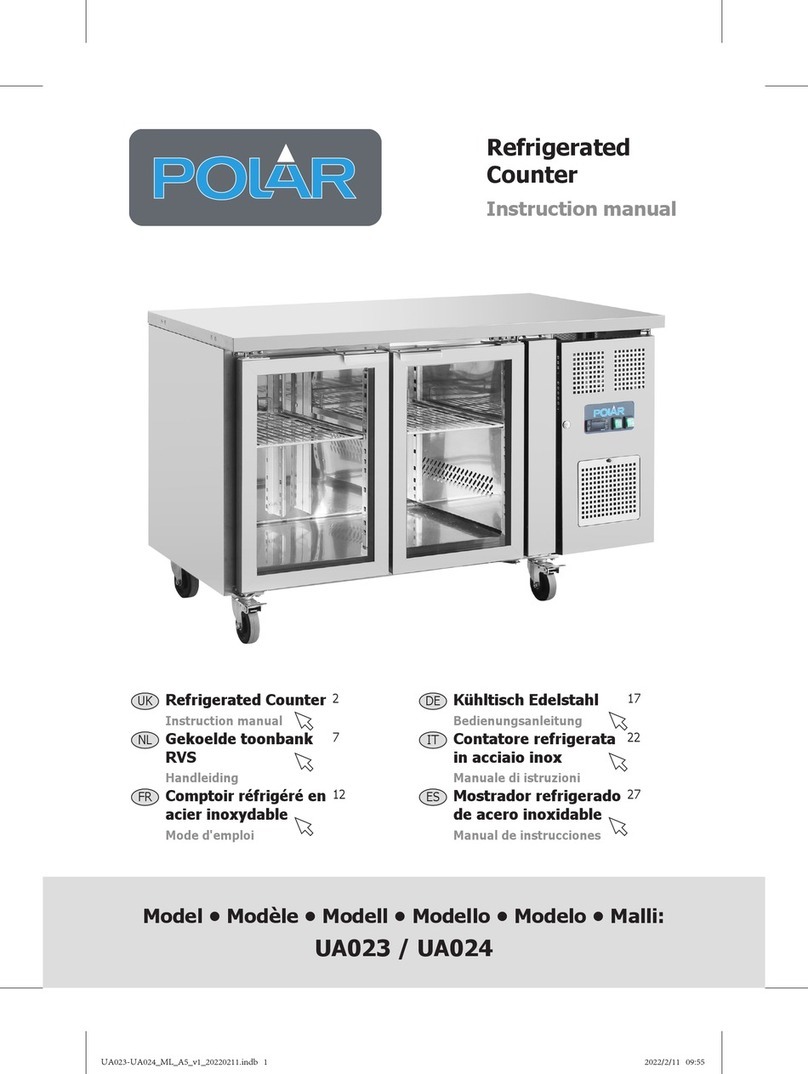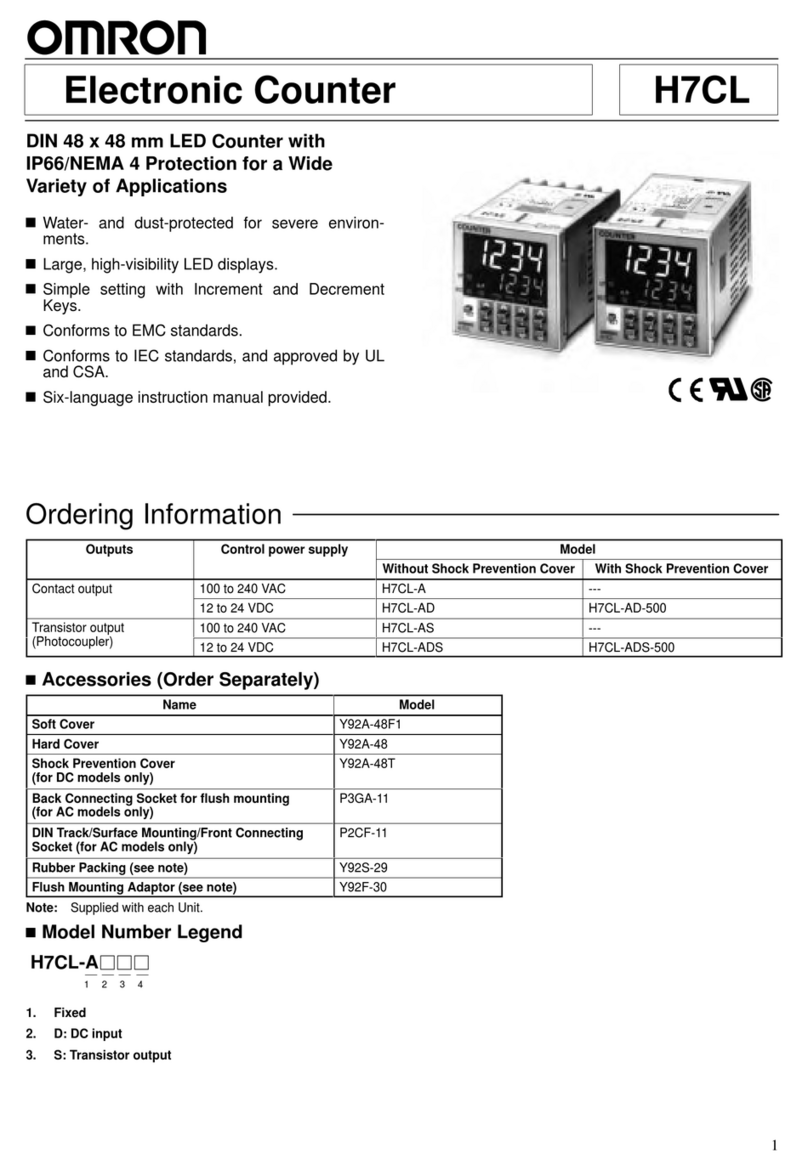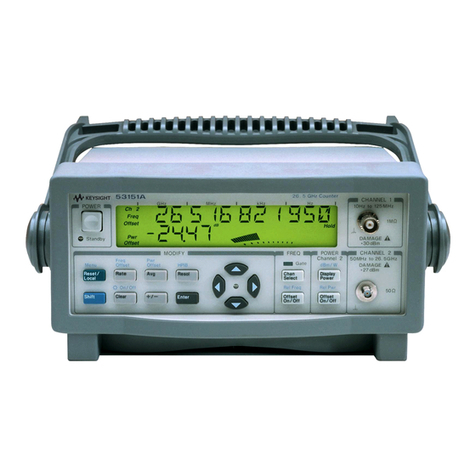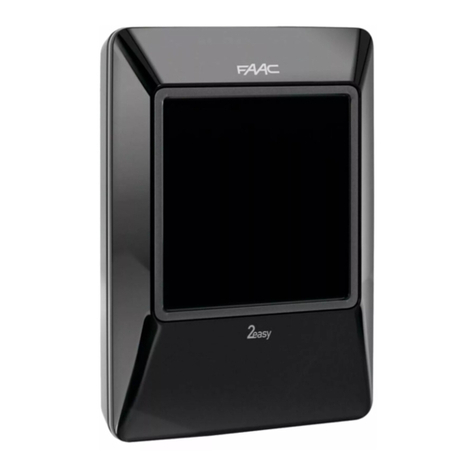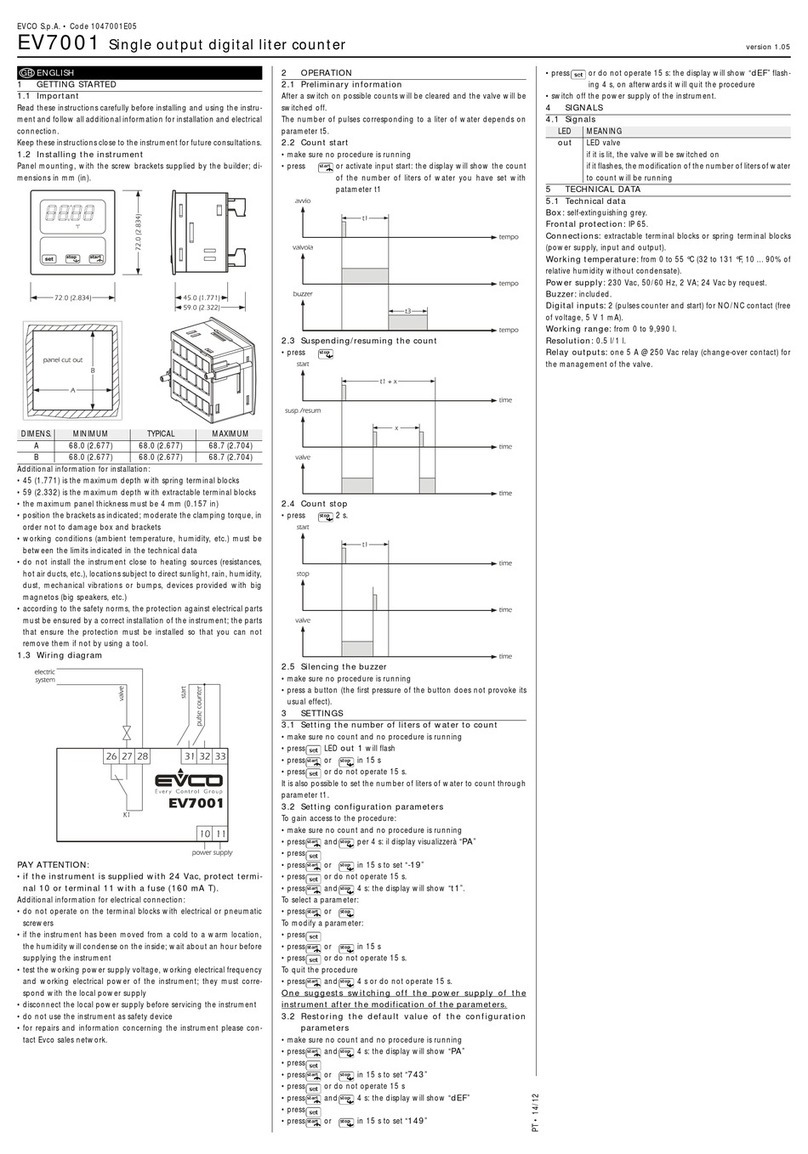
Page 4 | ENG
2.2 Counting input (Start input) terminal 5
Input damped to 25 Hz for pulse counting with
the pulse preset counter or static start input with
the time preset counter (time counting active
when input is active, time indicator located on
top left flashes when time counting is active).
Note: The reset input (terminal 6) and the coun-
ting input (terminal 5) are inputs with a common
connection (terminal 7) and must be controlled
wit the same polarity.
2.3 Key lock input
Tre front keys (including the set key) are locked
when this input (terminal 2) is set to +3 VDC
(terminal 1).
3. Output
Relay with potential-free contact, contact pro-
grammable as normally open or normally closed
(terminal 3 and terminal 4). For the adding count,
the relay is activated when > preset value, for
the subtracting count, it is activated when < 0.
The output signal is programmable as a fugitive
signal between 0.1 and 99.9 seconds or as a
bistable signal with the setting 0.0 (Loop OFF) no
automatic repetition. When the relay is active, a
colon symbol is displayed on the left end of the
lower row. The output relay shall not exceed a
switching frequency of 4 Hz.
4. Setting the operating mode and the
operating parameters
4.1 New installation
In case of a new installation of the counter, after
a battery replacement that lasted more than 20
seconds, or if the counter switched over to the
„NoFunc“ safety mode because of a too low
battery voltage, the preset counter switches
automatically to the programming mode. All
parameters must then be input again (see 4.2).
Parameter modification is also possible during
operation. For safety reasons, to access the
programming mode, the reset key and the keys
of the 5th and 6th decades must be pressed
simultaneously. The lower display line then dis-
plays the message INIT. If these 3 keys remain
pressed, a countdown from 5 to 0 takes place
in one-second intervals. If the keys are released
during this countdown, the device switches back
to the previous operating mode. If the keys are
released after 0 is reached, parameter setting is
activated and the first parameter is displayed.
4.2 Setting the parameters
The key of the 1st decade allows switching
among the available parameters (e.g. add-sub)
and the key of the 6th decade allows switching
over to the following function. The duration of the
fugitive pulse is set using the keys of decades
1-3. After the last input (dP), the key of the 6th
decade allows jumping back to the start of the
programming routine; pressing simultaneously
the reset key and the keys of the 5th and 6th
decades allows saving the parameters.
Note: Every time the programming routine is
called up, the counter switches back to the
basic parameter setting, i. e. the previous pro-
gramming is lost and the counter and preset
values are reset to zero.
4.3 Parameters description
(see also the function sequence)
Funct.Count: Pulse preset counter operating
mode
Funct.Time: Time preset counter operating
mode
tMode: Programmable time range (only
for Funct.Time), SEC=seconds,
Min=minutes, hour=hours
Count Add: Adding counting mode
Count Sub: Subtracting counting mode
LooP off: Automatic repetition off
When parameter LooP is „off“ and
dELAY time is 0.0, the output is
activated when the preset value
is reached and remains activated
until reset is performed.
LooP on: Automatic repetition on
When parameter „LooP is „on“, the
counter is reset automatically and
the output emits a fugitive pulse
for the time of the duration set in
dELAY.
rELAY no: Normally open contact
rELAY nc: Normally closed contact
dELAY: Output signal duration: fugitive
signal programmable from 0.01

